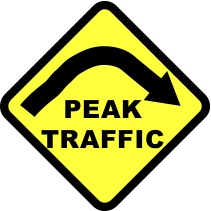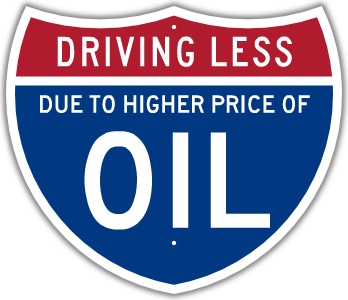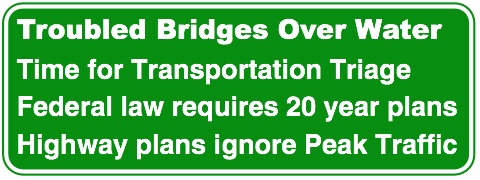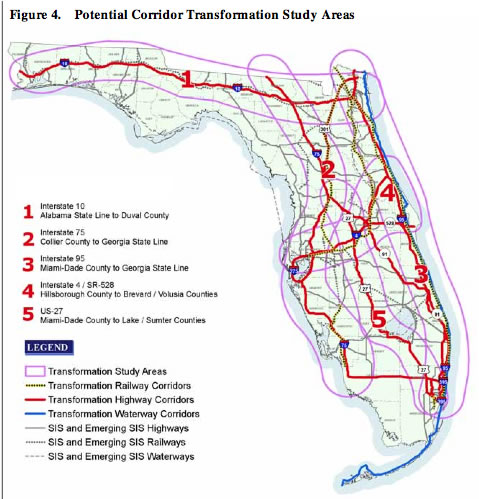Florida
| Trillion Dollar Highway Plans = Multiple Bypass Surgery a state by state list |
|
| High Priority Corridors specified by Congress in 1991, 1995, 1998, 2005, 2012 |
|
| NAFTA Superhighways | |
| Corridors of the Future | |
| J. Edgar Hoover Parkway: transportation surveillance, mileage taxes, RFID & video tolling |
|
| Paving Appalachia:
Corridor A to X in AL, GA, MD, MS, NC, NY, OH, PA, SC, TN, VA, WV |
|
| Alabama | Nebraska |
| Alaska | Nevada |
| Arizona | New Hampshire |
| Arkansas | New Jersey |
| California | New Mexico |
| Colorado | New York |
| Connecticut | North Carolina |
| Delaware | North Dakota |
| Florida | Ohio |
| Georgia | Oklahoma |
| Hawai'i | Oregon |
| Idaho | Pennsylvania |
| Illinois | Rhode Island |
| Indiana | South Carolina |
| Iowa | South Dakota |
| Kansas | Tennessee |
| Kentucky | Texas |
| Louisiana | Utah |
| Maine | Vermont |
| Maryland | Virginia |
| Massachusetts | Washington |
| Michigan | Washington, D.C. |
| Minnesota | West Virginia |
| Mississippi | Wisconsin |
| Missouri | Wyoming |
| Montana | |
High Priority Corridor 49: Atlantic Commerce Corridor
I-95 from Jacksonville to Miami
Route 618, the Lee Roy Selmon Expressway, an east-west tollroad in downtown Tampa, is a recently built highway. Suncoast Parkway, a north-south tollroad from Tampa toward northern Florida is another recent construction, an extension is planned but has run into funding problems.
A Tampa beltway (an arc on the north and northeast side) has not been built due to opposition.
new bypasses and Outer Belts have been built around Orlando in recent decades
Florida's Turnpike list of current tollroads
http://floridasturnpike.com/about_system.cfm
1. Turnpike Mainline
2. Homestead Extension of Florida's Turnpike
3. Toll 589 - The Veterans Expressway/Suncoast Parkway
4. Toll 417 – The Seminole Expressway/Central Florida GreeneWay/Southern Connector Extension
5. Beachline Expressway
6. Polk Parkway
7. Sawgrass Expressway
8. Western Beltway
Florida Future Corridors
Florida's long range planning assumes traffic will continue to increase through the year 2060. There is no discussion of oil depletion and other factors that will nullify these projections.
If Florida is able to finance these new tollroads without Federal funds then Federal Highway laws and regulations would not apply to these projects. Clean Air Act (pollution in urban areas), Clean Water Act (wetland destruction permits), Endangered Species Act (a license to kill) would still apply, but Section 4(f), the National Environmental Policy Act and FHWA regulations about highway design would not apply.
It's hard to believe that Florida's state transportation planners really want an "enhanced rail system" when they turned down Federal funds to help with the start of a high speed passenger train between Tampa and Orlando (Disney World), a project that might have been ultimately extended south to Miami. It's likely that we will have a permanent energy shock before the State of Florida abandons its zeal for tollroad construction.
Florida's Future Corridors
Action Plan
Prepared by the Florida Department of Transportation in cooperation with its Partners
December 29, 2006
Corridor Transformation means upgrading existing highways. Widening. Adding truck only lanes. Possibly a train track. Utility lines (electric lines, pipelines, etc). It's Florida's version of the NAFTA Superhighway design. Electronic tolling would be part of the upgrades. |
 |
official site: www.flfuturecorridors.org
Presentation graphics from Florida's Future Transportation Corridors - October 2012
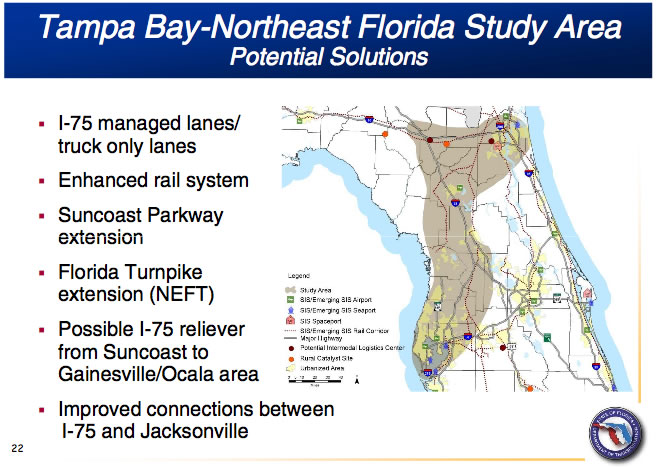
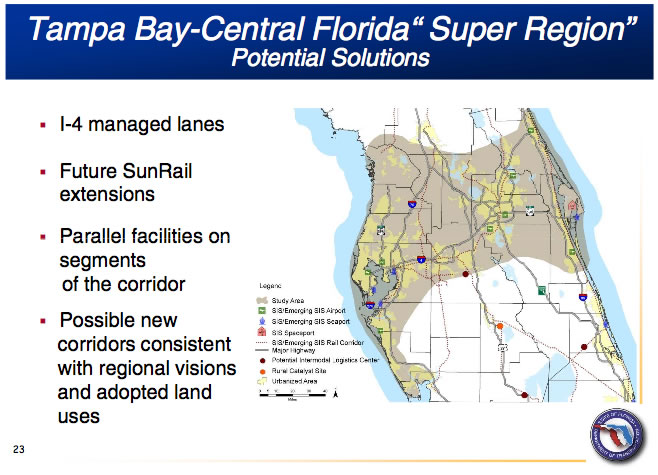

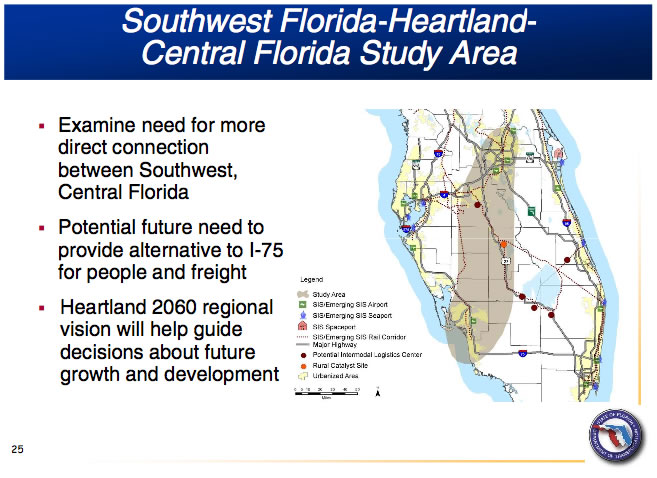
Florida's Turnpike list of proposed new and extended tollroads
Six of these seven tollroad projects have cost estimates - the total is $17.3 billion. Note that the Heartland Coast to Coast and Heartland Parkway routes would cross each other, as would the Suncoast Parkway 2 and the Northeast Extension of Florida's Turnpike, but these interchanges are not shown in these official maps.
Note that the Florida Future Corridors efforts is promoting additional projects not in this list including additions of truck only lanes to existing highways and "new terrain" highways that are not part of the tollroad list.
www.floridasturnpike.com/industryforum/documents/Project%20Profiles.pdf
Heartland Coast‐to‐Coast Corridor
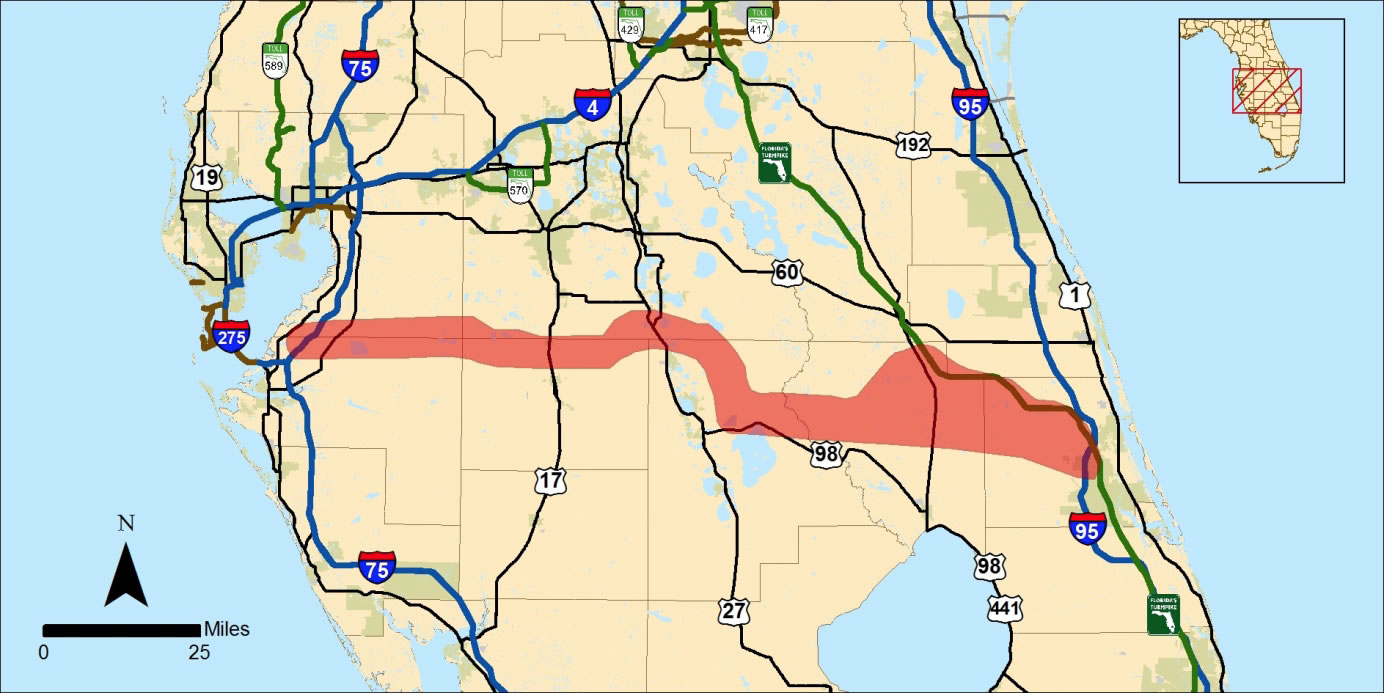
This project would be a new, limited-access toll road corridor connecting I-75 in the Manatee
County area on the west coast with the Turnpike or with I-95 in the St. Lucie area on the east
coast. The new corridor would be generally located somewhere between S.R. 60 on the north
and S.R. 70 on the south. Alternative corridor locations have been studied, including options for
an eastern terminus with the Turnpike near the Turnpike service plaza at Fort Drum, as well as
a terminus further east with I-95, near Port St. Lucie. The project emerged as one of the
corridors identified in the Florida Department of Transportation's "Florida Future Corridors
Action Plan" developed in 2006.
The only existing east-west connections cross-state in this part of south Florida are S.R. 60 and
S.R. 70, two general land service roadways. An efficient, safe, high-capacity transportation
facility in this area would allow the economic generators on either end to benefit from
connection to each other. It would also allow and support expansion of economic activity inland
along the route. The corridor may also serve a proposed Florida International Cargo Airport in
Hardee County and the Sebring Airport in Highlands County, which has aspirations for
increasing its air cargo throughput. If it were in place, this corridor would also add another
efficient route inland from the coasts for emergency evacuation of those areas, if needed.
Project Status: Preliminary Planning & Feasibility Study
Date Last Studied: 2007
Estimated Project Cost / Date: $6.6 Billion / 2007
www.floridasturnpike.com/industryforum/documents/Project%20Profiles.pdf
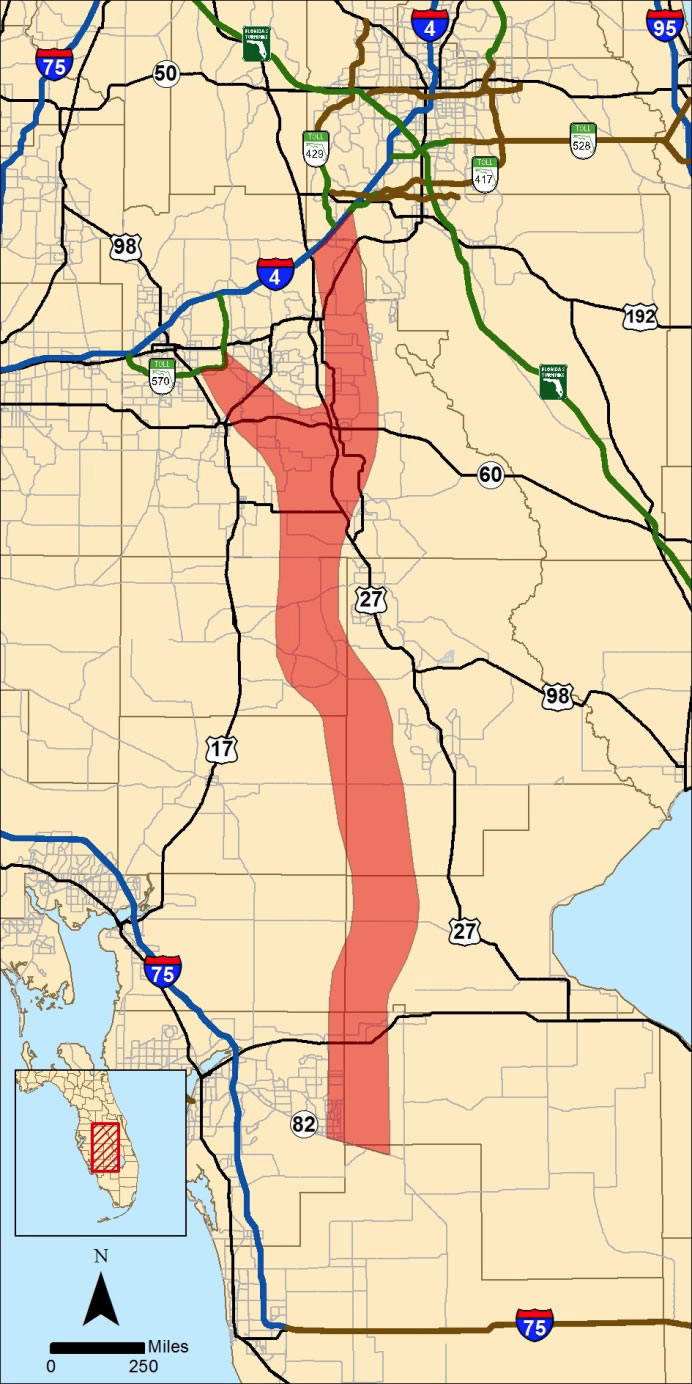 Heartland Parkway
Heartland Parkway
This project would develop a new-alignment, limited-access toll road approximately 140 miles through the central-southwest part of the state known as the "Heartland," connecting S.R. 82 east of Fort Myers with the Polk Parkway in Lakeland (via a 12-mile "spur" alignment) and with Interstate 4 between Lakeland and Orlando. The corridor location, illustrated on the accompanying map, would be approximately centered between two competing free roads through the heartland, U.S. 17 and U.S. 27. Interchange access to the Heartland Parkway would be provided at major crossing roads. The concept of the Heartland Parkway was developed by the Heartland Economic Agriculture Roadway Taskforce (HEART). The corridor emerged as one of the several "new corridors" identified in the Florida Department of Transportation's "Florida Future Corridors Action Plan" developed in 2006.
Possible benefits of the Heartland Parkway
may include support for revitalization of an
area of the state where the traditional
agricultural economy has suffered in recent
times from weather and crop disease related
impacts. Preliminary traffic studies have
indicated the corridor would provide some level
of relief in future years to congestion on the
parallel U.S. 27 and, to a lesser extent, on U.S.
17. Little effect on I-75 future traffic was
predicted by the studies.
Project Status: Preliminary Planning and Feasibility Study
Date Last Studied: 2007
Estimated Project Cost / Date: $6.9 Billion / 2007
Future corridors: planning or payola
By PAULA DOCKERY, FLORIDA VOICES | Hernando Today
Published: July 21, 2012
... Despite not having the necessary funds through tolls and general revenue dollars to proceed with the projects already included in the work program, well-connected landowners have applied political pressure to purchase rights-of-way and build new toll roads to direct development near their land.
The Florida Department of Transportation (FDOT) describes this plan, the Future Corridors, as a cooperative effort with the Florida Transportation Commission to work with statewide, regional, and local partners to identify corridors that will be significantly improved, transformed or built over the next 50 years. ...
Extending the period for feasibility:
An attempt to push the development of a corridor in the "heartland" was rebuffed by Gov. Charlie Crist, who cited the fact that there would not be enough traffic to generate the tolls to pay for the highway. Florida law requires that a proposed toll road become profitable in 20 years. After Crist left office, those same legislators quietly changed the legal threshold to 30 years, making it much easier to justify construction.
Increasing Bonding Authority:
In 2007 the Republican-controlled Legislature, which generally opposes more debt, increased the bonding authority so the state could borrow more money for its roads program.
As the economy soured, money for roads was drying up. A few legislators tried repeatedly to increase the bonding authority even though a bond finance report showed that the state was dangerously close to its debt limit.
Folding Expressway Authorities into the Turnpike Authority:
Several high-ranking senators proposed the merger on the assumption that a single large authority would be able to borrow money more easily. In 2011 a coalition of Tampa and Orlando senators, who saw the merger as a raid on the tolls collected through their expressway authorities, killed the plan. Undeterred, the same players tried a different tact in 2012. They kept the expressway authorities as independent entities but provided for revenue sharing to assist in their desire for increased bonding capability.
http://thepoliticalhurricane.com/2012/11/29/heartland-parkway-update/
Heartland Parkway Update
Posted on November 29, 2012 by Kartik Krishnaiyer
Yesterday, the Tampa Bay Times ran an interesting piece on large landowners and the "Future Corridors" projects that will build toll roads in rural areas, while creating substantial Environmental issues. The project advocated by Jeb Bush and killed by Charlie Crist has been revived by Governor Rick Scott. In July, I editorialized about the Heartland Parkway, the signature project of the "Future Corridors" initiative.
As the Times story indicates this isn't simply an innocent initiative meant to stimulate growth and provide needed infrastructure in rural areas. It amounts to a taxpayer funded boondoggle to directly benefit the state's biggest landowners. At the same time, Governor Scott has not provided the type of leadership needed to develop public transportation and better highways in urban areas that is required. Perhaps since these areas did not support the Governor he is less committed to developing a sustainable infrastructure where he lost in 2010. Or perhaps it just fits with the Governor's continued assault on the Environment and rewarding large campaign contributors and industry.
In outreach to large landowners, Gov. Rick Scott finds support for toll road project
By Michael Van Sickler, Times/Herald Tallahassee Bureau
In Print: Thursday, November 29, 2012TALLAHASSEE — To make way for a proposed network of sprawling toll roads, Florida transportation officials are considering reserving tracts of remote timberlands, cattle ranches and phosphate mines from some of the state's largest landowners.
According to a memo released this week by the Florida Department of Transportation, five companies that own a combined 5 percent of the land in the state support the concept of Future Corridors, a series of massive toll roads that would crisscross the state's rural areas to spur economic growth.
"While the need for future roads may be far off in the future," the memo states, "reserving land now provides certainty for planning and may be more cost efficient than future condemnation or acquisition."
Land acquisition can be a deal killer for any road project, so the memo, while brief and vague, could boost the prospects of a project that until recently had appeared dead.
Hatched by former Gov. Jeb Bush, Future Corridors was shelved by former Gov. Charlie Crist, who instead emphasized improving existing infrastructure and urban areas. Gov. Rick Scott, who like Bush killed a high-speed rail plan linking urban centers upon taking office, revived the Corridors project and views it as an economic engine for rural counties that will create jobs. ...
Companies interviewed are supportive of Future Corridors, which could help with development projects they are planning.
• Foley Timber and Land Co. is a private company based in Perry, about 50 miles southeast of Tallahassee. It owns 562,000 acres in Florida, making it the state's largest landowner. In Taylor County, it plans to build 25,000 homes on 30,000 acres, and commercial and industrial development on another 14,500.
• Plum Creek is a real estate trust based in Seattle that owns 520,000 acres in Florida. It wants to transform 500 acres in Columbia County into a giant freight rail "gateway" project.
• Rayonier Inc. is a Jacksonville real estate trust that owns 420,609 acres in northern Florida, primarily along the east coast. It has two large-scale projects in east Nassau County north of Jacksonville, marshland that could be aided by a loop between Interstate 95 and Interstate 10. One project is slated for 24,000 homes and includes malls, office parks and industrial space.
• Deseret Ranches is a Florida-based land investment firm and cattle ranch operation owned by the Mormon Church. It has 290,000 acres in Central Florida, including Hillsborough, Orange, Osceola and Brevard counties. It is planning a large-scale project of nearly 30,000 homes in Osceola County.
• The Mosaic Co., which is based in Plymouth, Minn., is the world's leading producer of concentrated phosphate. It owns 250,000 acres in Central Florida and is planning its first development project in southeastern Polk County on 16,000 acres once used for phosphate mining. Called Streamsong Resort, it would include a hotel with 250 rooms and two golf courses.
Heartland Parkway
from: Smart Choices, Less Traffic: The 50 Best and Worst Transportation Projects In the United States
Sierra Club Beyond Oil Campaign, November 2012
http://content.sierraclub.org/beyondoil/content/smart-choices-less-trafficFlorida's Heartland Parkway is a proposed 150-mile high-speed tolled expressway from Polk County to near Fort Myers in Collier County. Proposed in 2006 but still in the early planning stages, the toll road will traverse rural counties in central Florida, taking over a decade to construct at a cost of $5.6 billion. The state has said that they have no money to finance the road, but that it would be privately owned and constructed. Opposed by some counties and most of the state's environmental organizations, the toll road would open up some of the last remaining rural areas of the state to development. The road would dissect the habitat of the endangered Florida Panther, cutting through some of the last state remaining scrub ecosystems with unique flora and fauna. The State Senate Budget Committee Chairman, who has advocated for the project, owns a large property in Central Florida and serves to benefit if the road is constructed.
www.floridasturnpike.com/industryforum/documents/Project%20Profiles.pdf
 Suncoast Parkway 2
Suncoast Parkway 2
This project would develop a new-alignment, limited-access toll expressway approximately 27 miles in length, connecting the north end of existing Suncoast Parkway in Hernando County with U.S. 19 in Citrus County. The Parkway has been identified as a needed link in the Florida Intrastate Highway System (FIHS) by the state legislature. As part of the state's FIHS, the Parkway would provide a high-speed, high-volume facility in Florida's fast-growing Suncoast region, easing congestion on local roadways and accommodating anticipated growth in the area.
The Suncoast 1 project was opened to traffic in 2001. That 43-mile toll road connects seamlessly with the north end of the Veterans Expressway, another Turnpike system toll road that extends to the vicinity of Tampa International Airport in Hillsborough County.
The Suncoast 2 project is proposed to have consistent features with the other two toll roads and, together, they would provide 85 miles of limited-access toll expressway from Tampa to the northwest portion of Citrus County.
Project Status: Design Approximately 60% Complete
Date Last Studied: 2007
Estimated Project Cost / Date: $600 Million / 2011
www.suncoast2online.com/faqs.php
Current Status: Suncoast Parkway 2 project suspended (paused).
(Please click here for more information)
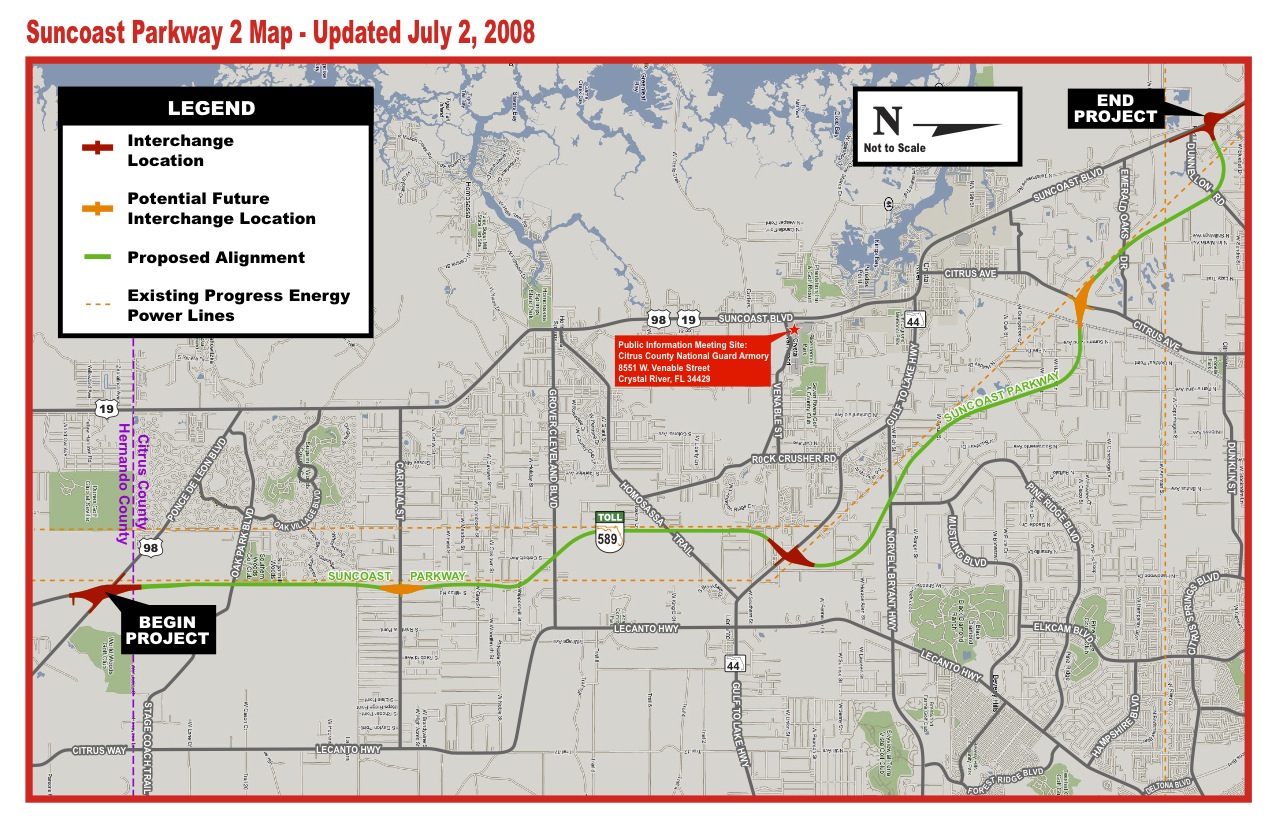
www.floridasturnpike.com/industryforum/documents/Project%20Profiles.pdf
Northern Extension of Florida's Turnpike (NEFT)
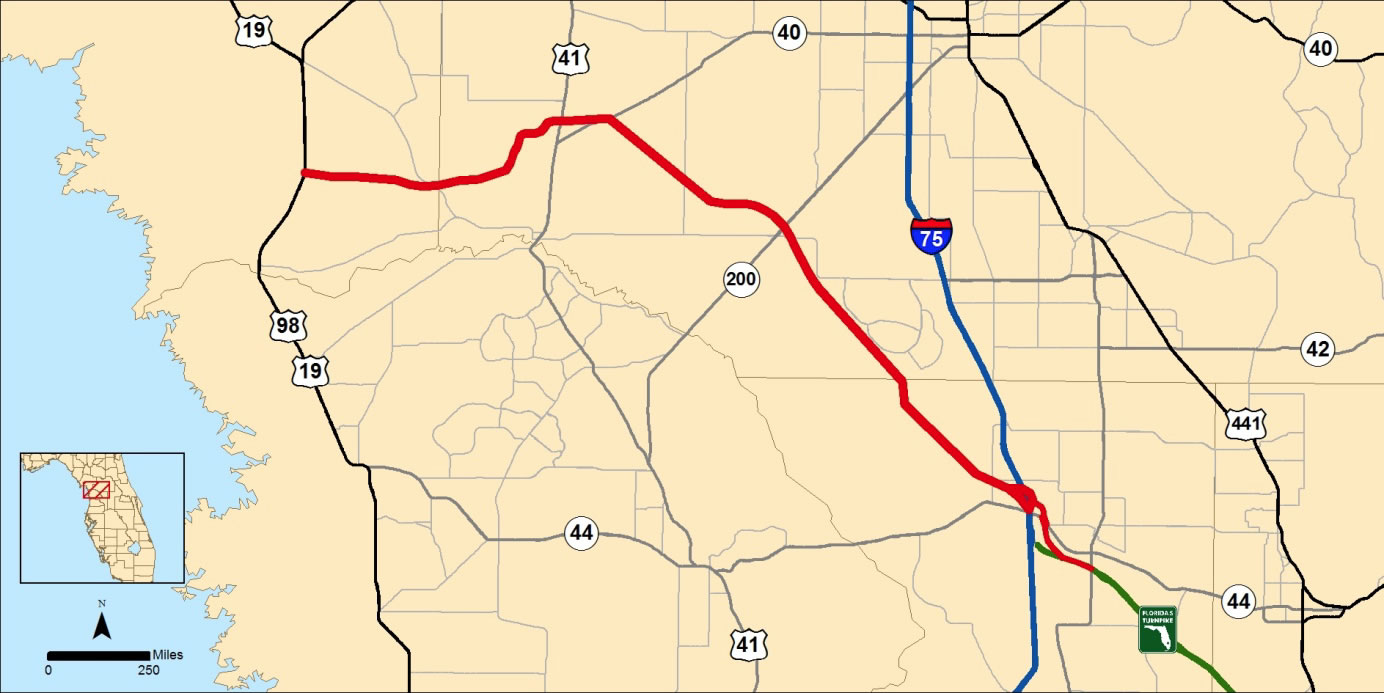
This project would extend Florida's Turnpike from its present northern terminus at Interstate 75 near Wildwood in Sumter County to U.S. 19/98 south of Lebanon Station in Levy County. The total length of this corridor is 51 miles, which would include a six-mile realignment of the northern end of the existing Turnpike, required to avoid environmentally-sensitive areas. This project would have interchanges at I-75 near Wildwood, S.R. 200 south of Ocala, U.S. 41 near Dunellon, and at the northern terminus of U.S. 19/98.
It is anticipated this corridor would provide relief to I-75 in north Florida. In conjunction with the Turnpike realignment at the present north terminus, this project would also improve peak period operation of I-75 and the Turnpike south of S.R. 44.
Project Status: Planning Feasibility Study / Incomplete PD&E
Date Last Studied: 1998
Estimated Project Cost / Date: $411 Million / 1998
www.floridasturnpike.com/industryforum/documents/Project%20Profiles.pdf
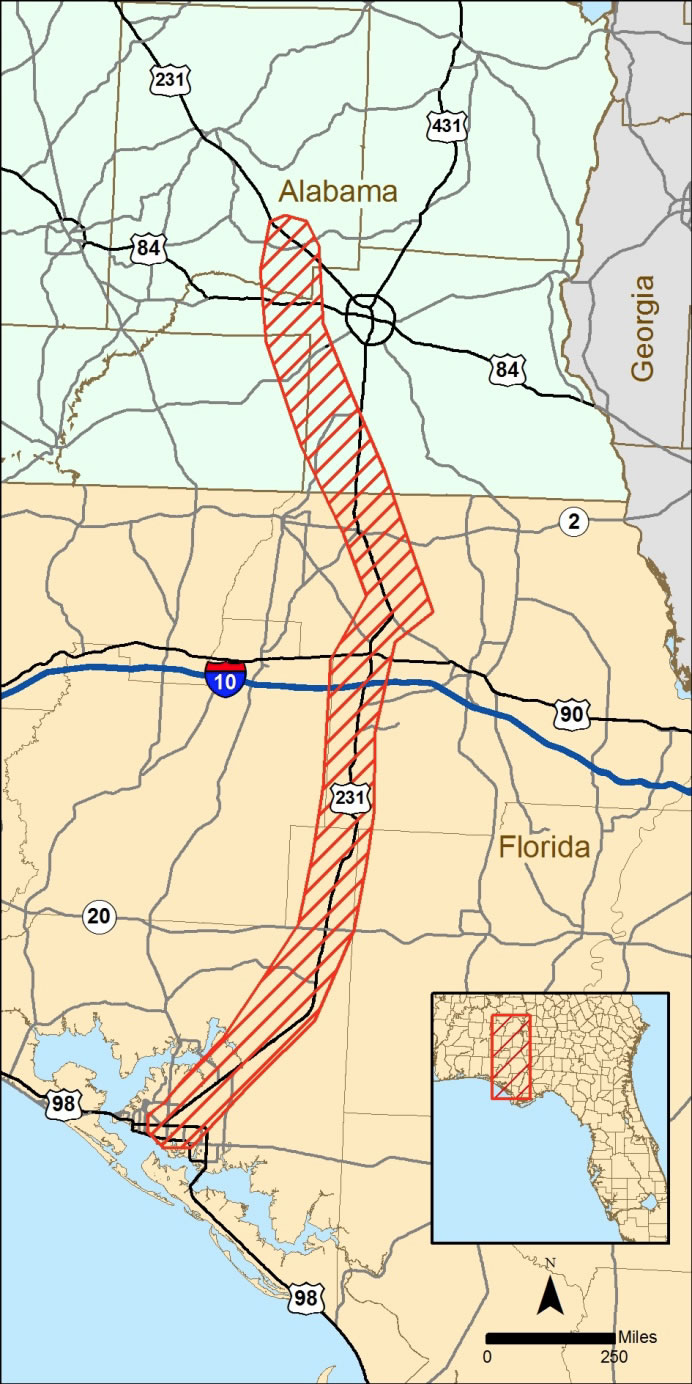 Panama City-to-Alabama
Corridor (aka U.S. 231 Toll
Study)
Panama City-to-Alabama
Corridor (aka U.S. 231 Toll
Study)
This proposed project would develop a new alignment toll road paralleling existing U.S. 231, from the vicinity of Panama City to a connection with an Alabama-developed project that would continue northward to provide a bypass of the City of Dothan, Alabama. The portion of the project in Florida, from Panama City to the Alabama/Florida state line, would be approximately 66 miles in length. The portion in Alabama would add 23 miles. The corridor emerged as one of the several "new corridors" identified in the Florida Department of Transportation's "Florida Future Corridors Action Plan" developed in 2006.
The Florida portion of the corridor would serve the Panhandle counties of Bay, Calhoun, Jackson, and Washington and would serve as a traffic reliever to U.S. 231, a route that generally provides recreation access between Alabama and the Florida Gulf Coast. Consequently, the highest traffic demands are created by weekend traffic. Interchange locations would most logically be at I-10, U.S. 90, and S.R. 20.
Project Status: Sketch-Level Traffic & Revenue Study
Date Last Studied: 2007
Estimated Project Cost / Date: Not Estimated
www.floridasturnpike.com/industryforum/documents/Project%20Profiles.pdf
Wekiva Parkway
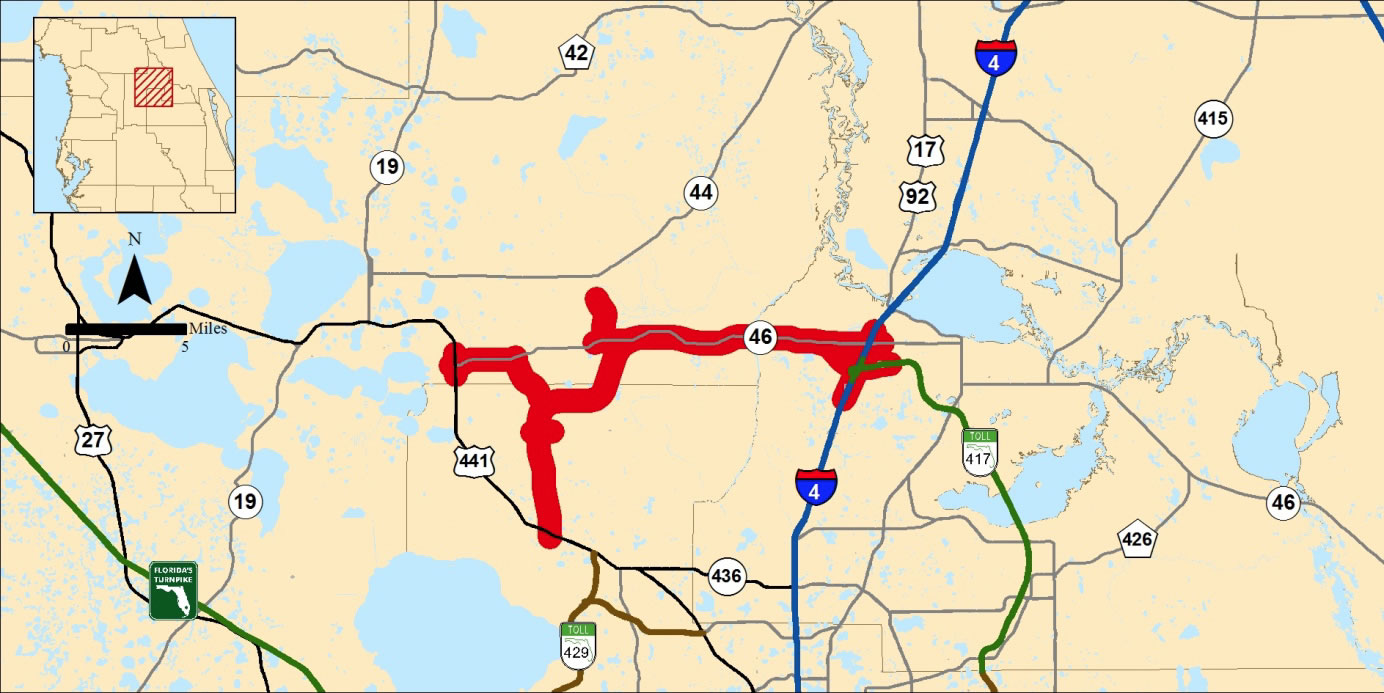
This project is the proposed extension of the S.R. 429 toll road, from its planned terminus at U.S. 441 west of Apopka to the north and east into Lake and Seminole counties, connecting on the east with S.R. 417 (the Seminole Expressway) and Interstate 4 at Sanford. The project is intended to complete the toll beltway around the Orlando Metro Area and serve as an alternative to U.S. 441 and S.R. 46. Former Florida Governor Jeb Bush signed The Wekiva Parkway and Protection Act into law on in 2004. The law authorizes the building of the Wekiva Parkway and provides protection to the Wekiva River system.
The project has wide support in the region, including advocates for environmental protection and conservation, who view favorably the stipulations in the law requiring environmentally sensitive design and measures to protect natural systems. As an example, the project will include safe crossing areas for wildlife, with the roadway carried on elevated sections through critical areas.
Project Status: Investment-Grade Traffic & Revenue Study (under development)
Date Last Studied: On-Going
Estimated Project Cost / Date: $1.7 Billion
note: it would be interesting to know who are the alleged "advocates for environmental protection and conservation" who support building this highway across wetlands. Do they take contributions from the Walt Disney Company?
www.floridasturnpike.com/industryforum/documents/Project%20Profiles.pdf
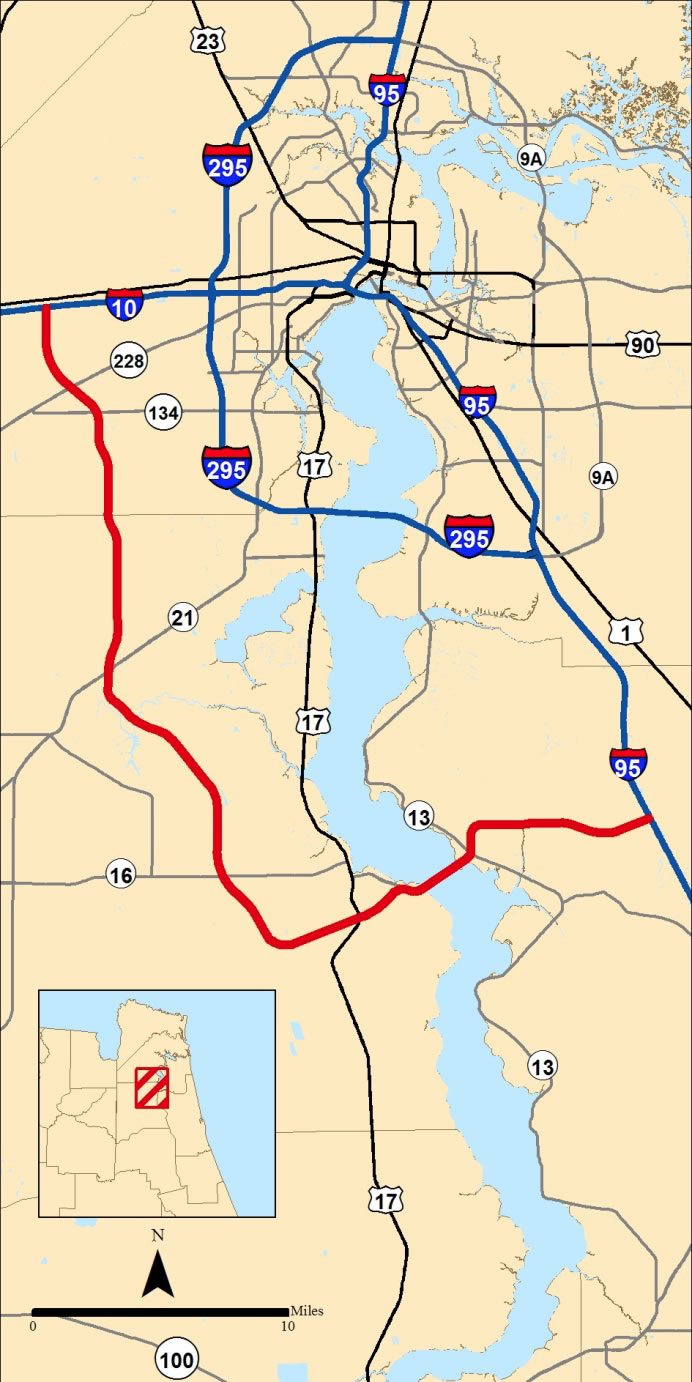
First Coast Outer Beltway
The First Coast Outer Beltway is a proposed four-lane, limited-access toll facility in the Jacksonville area. It would provide a connecting roadway outside the existing I-295 loop, connecting I-95 in St. Johns County and I-10 in Duval County. A total of 13 new interchanges and a major bridge structure across the St. Johns River would be included in the project, the total length of which is approximately 46.5 miles.
The Florida Department of Transportation has recently announced plans to construct the first section of the Outer Beltway, from Blanding Blvd. (S.R. 21) in Clay County, northward approximately 15 miles to I-10 in Duval County. That portion of the Outer Beltway will generally follow the present alignment of S.R. 23, also known locally as the Branan Field-Chaffee Road.
Project Status: Public-Private Partnership
Solicitation Withdrawn
Date Last Studied: 2011 (S.R. 23 portion)
Estimated Project Cost / Date: $1.9 Billion /
2010
www.fdotfirstcoastouterbeltway.com
About this project:
The First Coast Outer Beltway is a proposed four-lane limited access toll facility that includes the St. Johns River Crossing Corridor in St. Johns and Clay Counties and the Branan Field-Chaffee Road (First Coast Expressway) project in Clay and Duval Counties.
The First Coast Outer Beltway will provide a connecting roadway, outside of the existing I-295 loop, between I-95 in St Johns County and I-10 in Duval County. A total of 13 new interchanges and a major bridge structure across the St. Johns River are also proposed. The total length of the proposed roadway is approximately 46.5 miles.
The northern 15 mile section from Blanding Blvd to I-10 is currently scheduled to be constructed by two design-build projects with scheduled lettings in 2013. This North segment is referred to as either the First Coast Expressway or Branan Field-Chaffee Express project. The remaining sections are the South from I-95 to US-17 and Middle from US-17 to Blanding Boulevard. Combined, these sections make up the St. Johns River Crossing corridor and are anticipated to have final NEPA approval in the spring of 2013. Adjacent to the First Coast Expressway corridor are the Branan Field Frontage Roads, which are currently under construction.
For more information about these projects please refer to the following links:
First Coast Expressway / Branan Field Chaffee Express
St. Johns River Crossing
Branan Field Frontage Roads
The South and Middle segments of the First Coast Outer Beltway could potentially be constructed using a different financing method called a Public Private Partnership (PPP).
http://www.bizjournals.com/jacksonville/news/2012/09/12/construction-begins-on-first-coast.html
 Sep 12, 2012, 11:15am EDT
Sep 12, 2012, 11:15am EDT
Construction begins on First Coast Outer Beltway project
Sarah Mueller
Reporter-
Jacksonville Business Journal
Construction has begun on the first stages of the First Coast Outer Beltway, according to a news release.
The Florida Department of Transportation has started building the northbound and southbound frontage roads which will become part of the Outer Beltway roadway system.
The frontage roads should be finished in late 2013 and will cost $13.2 million to construct. Hubbard Construction Co.'s Jacksonville office has been hired by the FDOT to build the roads.
.




